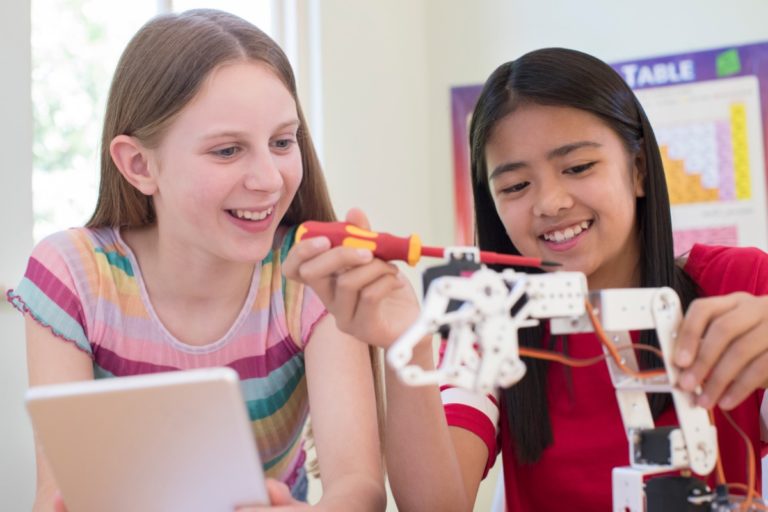
Multisensory instruction has been an imporant topic recently, but has not always been commonly used in classrooms. When many of us think back to our school classrooms (whether it is elementary, high school, or college), many of us remember the teacher at the front of the class, teaching us verbally. Sometimes, the teacher would write on the chalkboard or give us handouts. Although not always the most helpful, these traditional types of approaches still remain more common as children get older, and when class sizes are bigger.
However, with the help of science and research, schools also have been using new ways of teaching children that appear to be effective, particularly for children with learning challenges. There is now an increased emphasis on multi-sensory learning, particularly with students with learning challenges in reading, writing, math, and spelling. Multisensory learning has also been found to be helpful for children with attentional concerns, autism, or cognitive challenges.
What Is Multisensory Instruction?
Multisensory instruction uses as many of the senses as possible, including taste, smell, touch, sight, hearing and movement. In most multisensory lessons, students engage with the material through a combination of different senses. For example, if your child were learning about insects, they may have the chance to examine, touch, and watch the insects, in addition to reading about them or listening to the teacher present information about them. They may smell the protective scent of the animal. They may include writing to record information about the insects as they watch them, and gross motor games to learn about the insect’s body parts and how they work together.
Why Is Multisensory Instruction Important From a Brain Perspective
There have been many studies on learning using brain-based studies. Some neuroimaging studies indicate that multisensory learning activates larger parts of our brains, therefore increasing the chances of improved neural connections. Sensory data passes through brain filters, connecting to previously learned information through our neural pathways. Basically, the more of our brain we use, the better chance we have of remembering things later and connecting new knowledge to things that we already know.
Other studies have also determined that multisensory approaches are perceived as more interesting and engaging. As a result, they hold the student’s attention better, which allows them to remember the information better long-term. Our neural pathways are better engaged when the information is relational, emotional, “personally relevant, learner-participatory, and experiential.” (Willis, 2007). In other words, the more senses that are involved, the more our brains register curiosity, enjoyment, and significance of the information. We learn and remember the information better.
Multisensory Instruction for Dyslexia
For children with Dyslexia and Dysgraphia, a multisensory approach to reading has been found to be more effective than a more traditional educational approach. One of the strongest approaches is Orton–Gillingham, but others include Wilson Reading System, Lindamood Bell System, and the Barton Reading Program. These approaches use sight, sound, movement and touch to help kids connect language to words. Some use a “sound-tapping” system, in which students tap out sounds and morphemes with their fingers and thumbs. Others include color-coded letter tiles and blocks that help students connect sounds to letters.
Multisensory Instruction Helps Math and Science Too
Multisensory instruction has been effective to teach math as well. Namely, math programs, such as Touch Math, Orton Gillingham Math, and the Multisensory Math Program also use many senses to help children learn and use math. These approaches often apply manipulatives (small objects), puzzles, tracing, colored materials, and textured materials to effectively improve math skills. This article, featured on Understood.org, offers 10 common ways that parents can use to help their children with math using multisensory techniques.
Science activities, like the insect teaching model described above, can also use multisensory learning experiences. Even music has been found to be a very helpful multisensory technique to learn, often employing songs and chants to learn new material, facts, or information. (Musicians are often very effective learners with strong memory skills).
Summary
To summarize, as educational and neuroscience research progresses, we have learned that multisensory instruction has many benefits. It can be particularly helpful for children and adults with learning issues, as it fully involves our brains and senses in active learning.
References
Bara, F., Gentaz, E., Colé, P., Sprenger-Charolles, L. (2004). The visuo-haptic and haptic exploration of letters increases kindergarten-children’s understanding of the alphabetic principle. Cognitive Development, 19, 433-449.
Blau, V., Reithler, J., van Atteveldt, N., Seitz, J., Gerretsen, P., Goebel, R., Blomert, L. (2010). Deviant processing of letters and speech sounds as proximate cause of reading failure: a functional magnetic resonance imaging study of dyslexic children. Brain, 133, 868-79.
Fredembach, B., de Boisferon, A. H., Gentaz, E. (2009). Learning of Arbitrary Association between Visual and Auditory Novel Stimuli in Adults: The “Bond Effect” of Haptic Exploration. PLoS ONE, 4, e4844.
Shams, L., & Seitz, A. R. (2008). Benefits of multisensory learning. Trends in Cognitive Sciences, 12, 411-417.
Van Atteveldt, N., Formisano, E., Goebel, R., Blomert, L. (2004). Integration of Letters and Speech Sounds in the Human Brain. Neuron, 43, 271-82.
Willis, J. (2007). Brain-friendly strategies for the inclusion classroom. Association for Supervision & Curriculum Development.
![]()
